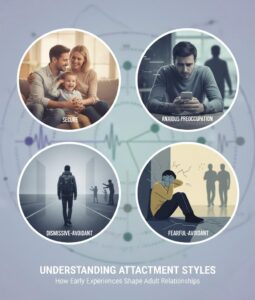By TherapyNearMe.com.au — strengths-based mental health, neurodiversity, and practical strategies
Read this first (important context)
This article takes a strengths-based look at several conditions. That does not mean the conditions are benign or that treatment isn’t needed. Many people experience substantial impairment and distress. The idea here is: with the right supports, some traits can be channelled into useful capabilities for study, work, creativity, and life.
Key takeaways (for quick readers)
- ADHD: more divergent thinking and sometimes intense hyperfocus on meaningful tasks. (White & Shah, 2006; Hupfeld et al., 2019).
- Autism: stronger detail detection and perceptual discrimination; a systematic, pattern-seeking cognitive style. (Mottron et al., 2006; Samson et al., 2012).
- Bipolar spectrum: population-level associations with creative occupations (particularly among relatives and in hypomanic states). (Kyaga et al., 2012; Karolinska summary).
- Dyslexia: evidence of visual-spatial and global scene advantages in some tasks; higher incidence reported among entrepreneurs in some studies. (Schneps et al., 2012; Logan, 2009).
- Anxiety: moderate arousal can aid vigilance/performance; anxious groups often show attentional bias to threat (useful in some roles), though too much anxiety impairs functioning. (Yerkes & Dodson, 1908; Bar-Haim et al., 2007—reviewed in later papers).
- OCD: consistently heightened error monitoring (enhanced ERN) can map to meticulous quality control—when symptoms are managed. (Endrass & Ullsperger, 2014; Gehring et al., 2000).
- Post-traumatic growth (PTG): some survivors report positive changes (meaning, relationships, strengths) alongside suffering. (Tedeschi & Calhoun, 2004).
ADHD: divergent thinking, curiosity, and hyperfocus
A robust line of studies finds that many adults with ADHD outperform controls on divergent-thinking tasks (generating many novel ideas), even while showing relative challenges on convergent tasks (arriving at one correct answer). (White & Shah, 2006; 2011). This is consistent with the observation that reduced inhibitory control can free associative thinking—useful for brainstorming, innovation, and entrepreneurial problem-solving. (White & Shah, 2006; 2011).
Hyperfocus, the intense absorption in intrinsically interesting tasks, is increasingly described in the ADHD literature. Large surveys and lab studies suggest many people with ADHD report more frequent and intense hyperfocus episodes than controls—helpful for deep work when channelled appropriately (while also risky for time-blindness). (Hupfeld et al., 2019; follow-ups in 2020–2023).
How to harness it (safely): value-based task selection; break big goals into stimulating sprints; externalise time (timers, calendars); pair ideation roles with partners who enjoy convergent execution.
Autism: precision, pattern detection, and systemising
The Enhanced Perceptual Functioning (EPF) model proposes autistic cognition often has locally oriented perception with enhanced low-level discrimination and autonomy of perceptual processing—mapping to exceptional detail detection, pattern recognition and accuracy-critical work. (Mottron et al., 2006; meta-analytic and neuroimaging updates).
These perceptual and cognitive profiles can be valuable in roles requiring quality assurance, data analysis, cybersecurity, engineering, and research, especially when environments reduce sensory overload and provide predictable routines. (Synthesis of the EPF literature).
How to harness it: job-task fit (clear rules, deep work time); sensory accommodations; written over verbal communication options; strengths-oriented coaching.
Bipolar spectrum: ideation peaks and creative industries (with caution)
Large registry studies from Sweden report a statistical association between creative professions and bipolar disorder—more pronounced among first-degree relatives of people with certain conditions (including bipolar). This suggests shared traits (e.g., novelty seeking, energy, associative fluency during hypomanic periods) may contribute to creative career pathways, although illness burden remains significant. (Kyaga et al., 2012; Karolinska summary).
How to harness it: close clinical care to stabilise mood; protect sleep; schedule creative work during euthymic/hypomanic-threshold energy while maintaining risk-management plans; collaborative editing during high-drive phases.
Dyslexia: visual-spatial problem-solving and entrepreneurial coping
Beyond phonological challenges, some studies show advantages in visual-spatial or global scene processing among groups with dyslexia—e.g., faster distributed-attention scene learning in specific tasks. Evidence is mixed, but several lab papers and reviews argue for relative strengths under the right task demands. (Schneps et al., 2012; ever since, findings remain heterogeneous).
In entrepreneurship research, dyslexia appears over-represented among founders compared with corporate managers in UK/US samples, possibly due to coping strategies, delegation, and big-picture thinking. (Logan, 2009; subsequent summaries). This is correlational—not destiny—but suggests a strength profile that some leverage in business contexts.
How to harness it: multimodal reading/writing tools; speech-to-text; diagram-first planning; team structures that pair vision-setting with operational detail support.
Anxiety: vigilance at moderate arousal
The classic Yerkes–Dodson curve—recently re-examined in modern neuroscience—describes how moderate arousal can improve performance, whereas too little or too much arousal degrades it. This helps explain why a little anxiety can sometimes sharpen focus before exams or presentations, but excess anxiety impairs memory and decision-making. (Yerkes & Dodson, 1908; review in Trends in Cognitive Sciences, 2024).
Meta-analytic work on attentional biases shows that anxious groups often orient rapidly to threat cues—a trait that, when managed, can be valuable in risk management, safety-critical monitoring, and security analysis, where early threat detection matters. (Bar-Haim et al., 2007; reviewed in later clinical syntheses).
How to harness it: skills for autonomic regulation (paced breathing, grounding); pre-performance routines; role design that validates risk scanning without rumination overload; CBT/ACT to keep vigilance functional, not paralysing.
OCD: meticulous quality control through enhanced error monitoring
Patients with OCD frequently show increased error-related negativity (ERN)—a neural index of hyperactive performance monitoring. In the real world, when symptoms are treated and compulsions reduced, this can map to exceptional conscientiousness and error detection in tasks where accuracy matters (e.g., auditing, code review, laboratory QA). (Endrass & Ullsperger, 2014; Gehring et al., 2000; meta-analytic confirmations).
How to harness it: evidence-based therapy (e.g., ERP); “definition of done” checklists to keep checking bounded; rotate responsibilities to prevent perfectionistic over-checking.
After trauma: post-traumatic growth (PTG) is possible for some
The PTG framework describes positive psychological change—such as deeper meaning, stronger relationships, or personal strength—that some people report after severe adversity, often alongside ongoing pain. Clinicians caution against “mandatory positivity”; PTG is not guaranteed, yet it’s a meaningful outcome for many survivors. (Tedeschi & Calhoun, 2004; critical reviews thereafter).
How to harness it: trauma-informed therapy; peer support; meaning-making practices; pacing and self-compassion.
Practical ways to turn traits into strengths (without romanticising suffering)
- Name the strength + the cost. E.g., “hyperfocus is great for deep work and risky for time-blindness.” Plan buffers.
- Design roles around peaks. Align tasks to natural interests (e.g., QA for detail-seekers; idea labs for divergent thinkers).
- Use scaffolds. External memory (apps, boards), body-doubling, checklists, scripts, and timers.
- Treat symptoms early. Therapy and, where appropriate, medication often increase capacity to use strengths.
- Build complementary teams. Pair big-picture thinkers with detail finishers; pair ideators with implementers.
- Accommodate sensory and cognitive needs. Lighting, noise, predictable routines, written instructions.
FAQs
Is it harmful to call mental health traits “superpowers”?
It can be if it minimises suffering. A safer frame is: some traits have upsides in certain contexts, and those upsides become accessible with care, supports, and workplace flexibility. (See evidence above on ADHD creativity, autism perceptual strengths, ERN in OCD, and PTG).
Does anxiety really help performance?
Sometimes—at moderate levels. Too little arousal = under-engagement; too much = overwhelm. (Yerkes–Dodson; modern updates).
Is depression a “gift” for analysis?
The analytical rumination hypothesis is debated. A meta-analysis of “depressive realism” finds only small/fragile effects; severe depression is typically impairing and merits treatment. (Moore & Fresco, 2012; critiques and replications).
References
- Andrews, P.W. & Thomson Jr, J.A., 2009. The bright side of being blue: Depression as an adaptation for analyzing complex problems. Psychological Review, 116(3), pp.620–654.
- Endrass, T. & Ullsperger, M., 2014. Performance monitoring in obsessive–compulsive disorder. Cognitive, Affective, & Behavioral Neuroscience, 14, pp.1065–1075.
- Gehring, W.J. et al., 2000. Performance monitoring in obsessive-compulsive disorder: Error-related negativity evidence. Psychiatry Research, 95(2), pp.167–178.
- Hupfeld, K.E. et al., 2019–2022. Hyperfocus in ADHD. Frontiers in Psychology and subsequent studies.
- Kyaga, S. et al., 2012. Mental illness, suicide and creativity: 40-year prospective total population study. Journal of Psychiatric Research, 47(1), pp.83–90.
- Mottron, L. et al., 2006. Enhanced Perceptual Functioning in Autism: An Update. Journal of Autism and Developmental Disorders, 36(1), pp.27–43.
- Moore, M.T. & Fresco, D.M., 2012. Depressive realism: A meta-analytic review. Clinical Psychology Review, 32(6), pp.496–509.
- Samson, F. et al., 2012. Enhanced visual functioning in autism: ALE meta-analysis. Human Brain Mapping, 33(7), pp.1554–1588.
- Schneps, M.H. et al., 2012. Dyslexia and spatial learning advantages under distributed attention. PLOS ONE, 7(11), e35724.
- Tedeschi, R.G. & Calhoun, L.G., 2004. Posttraumatic growth: conceptual foundations and evidence. Psychological Inquiry, 15(1), pp.1–18.
- White, H.A. & Shah, P., 2006; 2011. ADHD and creativity (divergent vs convergent thinking). Personality and Individual Differences, 40/50.
- Yerkes, R.M. & Dodson, J.D., 1908; contemporary review 2024. Arousal/performance relation. Trends in Cognitive Sciences (2024 revisitation).
- Logan, J., 2009. Dyslexic entrepreneurs: incidence and coping. Cass Business School research (UK/US).
- Karolinska Institutet, 2012. News summary: link between creativity and mental illness confirmed.
Final word
Strengths-based care is about dignity + design: acknowledging real challenges and setting up environments where people can do their best work. If you’d like help tailoring supports (NDIS, Medicare-rebated psychology, or private counselling), our team can guide you toward options that fit your goals.
General information only. Not medical advice.








